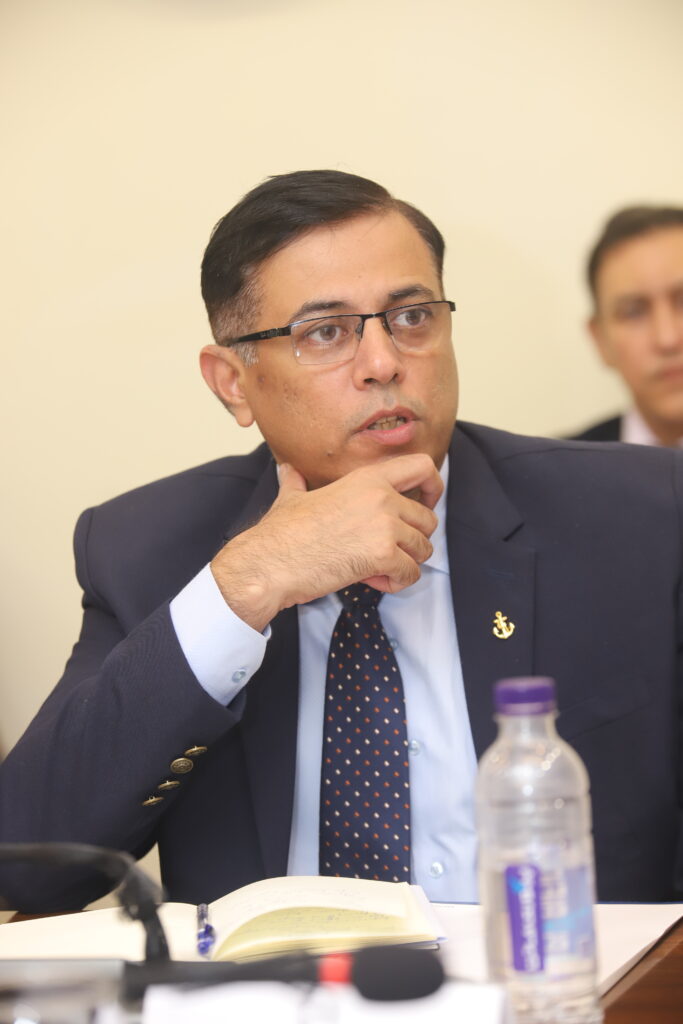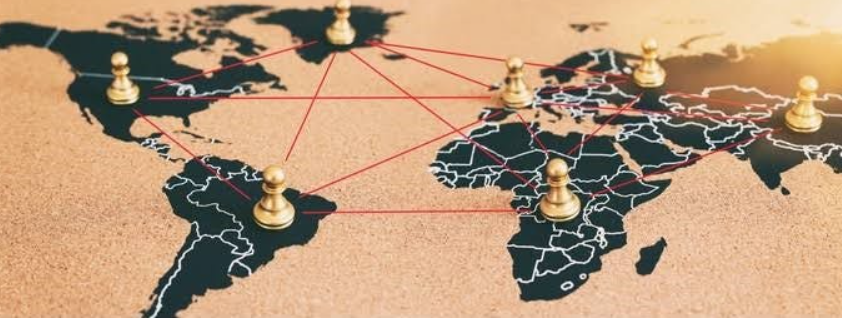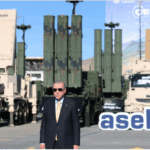By: Safia Mansoor and Ehsan Ahmed Khan
The state of world affairs can be most fittingly portrayed by the acronym VUCAII – Volatility Uncertainty, Complexity, Ambiguity, Innovation, and Immorality. Contemporary global power dynamics are reshaped by eroding principles of the UN Charter, partial bipolarity, changing economic center of gravity, deglobalization, technological advancements, rise of minilaterism, and protracted conflicts,. In this deteriorating VUCAII environment, can we remain oblivious to geopolitical chaos representing a ‘Disorder in Order’ situation? The disorder in the current world order has been surging to a dangerous level warranting immediate attention and space for diplomacy rather than brute force.
UN Charter predicated upon the certain ‘common principles’ enshrined in Atlantic Charter provided a foundational vision for a peaceful and secure post-world war II order. According to it, states would refrain from aggrandizement; seek no territorial alteration without public assent; respect people’s right to choose form of government; promote liberalization of trade; collaborate for sake of economic advancement and social security; promote freedom from fear and want to bring about peace; further freedom of high seas; and abandon use of force and undergo disarmament. However, contemporary geopolitical mayhem is incessantly diluting the foundational ideals of these charters, plunging the world order into abysmal degradation.
Multifaceted yet interrelated developments signify the economic and geopolitical shifts spawned by fluctuating power distribution at global and regional levels. The world transitioned from a multipolar to a bipolar and then unipolar world. Notwithstanding, the present international system seems to be ‘partially bipolar’ as states are either leaning towards the US-led West or gravitating towards China’s burgeoning sphere of influence without formally identifying themselves with respective alliance as in the case in multipolar and purely bipolar era.
The abrupt shift in the geographic center of the planet’s economic growth per annum, or ‘global economic center of gravity’—the average location of the earth’s economic activity calculated by Gross Domestic Product (GDP) across almost 700 key locations—has transformed at an unprecedented pace. The economic center has journeyed from China and India, which accounted for 60% of world GDP until 1700, to the West due to mass urbanization and enhanced productivity sparked by the British and American Revolutions. It then gravitated back to the East in the 1980s, owing to Japan’s economic boom and the rise of Asian economies. This trend further shifted to the East during 2000-2010 due to the economic rise of China and the further consolidation of Asian economies.
The world has also entered a period of ‘Deglobalization’ marked by ascent of powerful states, unilateral and local solutions, and stringent borders. It shows a retreat from globalized world characterized by multilateralism and global institutions, and free movement of trade and people. Post Cold War the world witnessed the long wave of globalization with 1990-2008 as period of ‘Hyper-globalisation’; however, the 2008 financial crisis turned the tide towards ‘Slowbalisation’ which is now rapidly transforming into ‘Deglobalisation’. Key events, notably Brexit, Russia-Ukraine war, Trumpism, global energy crisis, disruption in supply chain, and continuous downward trajectory of Foreign Direct Investment (FDI), alongside rising ideological differences, remain a testament to the world becoming less interconnected and deglobalized.
The ascendance of emerging and disruptive technologies (EDTs) such as AI, cyber technologies, quantum computing, and autonomous systems, has been yielding profound geopolitical ripples, acting as beacon of development and progress while concurrently opening Pandora’ box of challenges. Besides disrupting traditional power structures, creating new alliances, and forging a digital global order, EDTs are carving new battlegrounds for warfare. In this perspective, proponent of ‘Massive Attack of Disruption’ (MAD) concept, a scholar Harlan Ullman, believes that future warfare will be carried out by disruptive attacks or ‘Fifth night of apocalypse’ through disruptive forces such as cyberspace, drones, terrorism, government failure, and climate change. As China and U.S. lock horns in competition for technological hegemony in digital age, their national stakes relate to control in ‘silicon and chips’. This techno-nationalism delineates a seismic shift in global power dynamics wherein technological innovation becomes ‘currency of intrinsic power’, and data, the new oil. However, these developments have led to proliferation of ethical quandaries, such as the broadening chasm of technological asymmetry; the specter of Intelligence, Surveillance, and Reconnaissance (ISR); and enhanced risk of inadvertent escalation.
With the rise in multiple power centers across the globe, notably in the Global South coupled with enhanced proclivity of states to address key international issues through non-traditional methods and discourses, multilaterism seems to experience potent reconfiguration. This has also led to the ‘Minilaterism redux’ with a focus on shared interests paving the way for nimbler cooperative frameworks that are preferred by middle powers. It signifies a shift from ‘Multilaterism’ which focuses on broad collaborative mechanisms grounded on ideological commitment and shared values. From Concert of Europe to I2U2 (India, Israel, UAE, US), Mangrove alliance for climate, to Asia-Pacific centric Quad (US, Japan, Australia, and India) and AUKUS (Australia, UK, and US), minilaterism is gaining popularity at times when U.S.- China divide is growing and global powers are caught in lingering conflicts such as Ukraine war.
The tumultuous global arena, which is currently marked by strategic convergence, divergence, and competition coupled with protracted regional conflicts, is weaving an intricate web of what Edgar Morin refers as ‘Polycrisis’ that in turn is unleashing the geopolitical upheaval. In big-power political contestation, Ukraine has become a bargaining chip whose fate hinges on feeble security posture of Europe and Russia-US strategic maneuvering. In Middle East, Israel-Palestine conflict coupled with Israel-Iran war with now direct involvement of US signifies the region being a hotch potch of lethal regional and extra-regional wars. The embroilment in the Red Sea, hub of 30% of global container traffic, has forced global trade to circumvent the Bab-el-Mandeb strait and transit an extra 3,500 nautical miles through the Cape of Good Hope, thereby upending the supply chains and increasing the shipping cost. Another geopolitical hotspot remains the Asia-Pacific region, wherein U.S. has been actively pursuing its Free and Open Indo-Pacific (FOIP) strategy predicated upon building alliances with like-minded states. In that security calculus of the U.S., China is being considered as ‘revisionist state’ due to its territorial claims in the South China Sea on the basis of nine-dash line. These regional hot wars are further complicated by overarching U.S.-China competition, signified by strategic rivalries and trade wars that in turn exacerbate the maelstrom of geopolitical volatility.
In a world characterized by geopolitical flux, can states bear the cost of spontaneous actions and misadventures that may further debilitate international security? The ramifications of such a faux pas could be disastrous, probably engendering reconfiguration of power dynamics, more volatile inter-state relations, and economic downturns. To navigate this geopolitical flux, nations must exercise foresight, caution, proactive engagement, and prudent planning to craft a prosperous global future.
Safia Mansoor is Phd scholar of International Relations at School of Integrated Social Sciences, University of Lahore, and Research Associate at Maritime Centre of Excellence, Pakistan Navy War College Lahore, Pakistan. She has done MPhil in International Relations with gold medal in MPhil Social Sciences from Kinnaird College for Women, Pakitan. She has number of publications (Journal articles and short academic articles) published nationally and internationally. Her area of research includes Defense and Strategic studies, Emerging Military Technologies, South Asia, and Asia-Pacific Region.

Ehsan Ahmed Khan is Phd scholar of International Relations at School of Integrated Social Sciences, University of Lahore, and Deputy President Maritime Centre of Excellence, Pakistan Navy War College Lahore, Pakistan. He has number of publications at national platforms. His area of research includes Geopolitics of South Asia, Military History and Strategic studies.

***GEOPOLIST – Istanbul Center for Geopolitics offers diverse viewpoints. The opinions expressed in this text are not necessarily shared by GEOPOLIST.***







